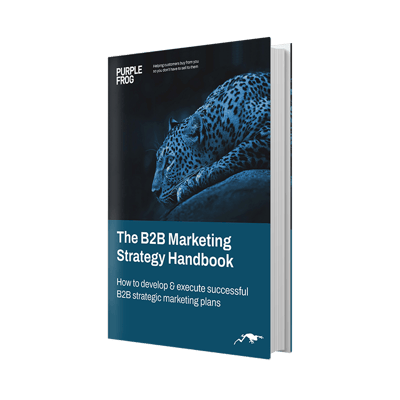How to run a successful video campaign
Video marketing is one of the new growth areas for marketing campaigns and a report released in 2009 by eMarketer indicates that the UK online video viewing audience grew by 10 percent to almost 30 million unique viewers and with YouTube being the second most popular search engine behind Google this figure will only continue to grow.
These figures only touch part of the market place as the growth of smart phones has meant that videos are now available on the move and with Apple selling over 17 million iphones and ipods in 2009 there is a huge audience waiting to be tapped into.
It is imperative that brand, marketing and product managers understand that videos can deliver a far wider reach into an audience than traditional advertising as whilst educating an audience has always been difficult with the use of video this can be much easier. An installation or tutorial video for example can be watched before purchase and will enable the potential customer to gain a better understanding f the product and therefore increase potential sales and reduce returns and disappointments.
Below are 5 tips to help you get started with your successful video campaign.
1. Make sure you integrate with other activity
It is important to realise that video marketing is not a stand-alone strategy but one that should be used in an overall campaign of joined up marketing. You will need to ensure that it supports or leads other marketing activity and maintains the same thread and calls to action that you are trying to achieve elsewhere.
The big advantage of video however is its flexibility as although it is still 2 dimensional it gives a lot more flexibility in getting the message across. It can be used to help create brand awareness at one end of the scale to providing product support and back up at the other end.
It is not a replacement to TV advertising and your video does not have to be an advert and in all honesty it is probably best if it is not just a revamp of an advert as most of these are watched because they are on not because the viewer wants to see them.
By having the video as part of a campaign it can be flexed to fit the criteria point 2
2. Ensure the video fits the audience or audiences
Understanding the audience is important in all campaigns and any video should also make sure that it delivers the right message to the desired audience. The real advantage of online videos is that they can be segmented and targeted far more easily than in other media. One video if planned and produced correctly can often cut into separate short videos which can help target different sectors of the same market, and short does mean short as even 10 seconds can often be enough to attract a potential customer to the next stage.
Do not be put off by the challenges of understanding the complexity of the opportunity available as providing you have a good story board and a strategy to ensure delivery to all parts of your campaign you can make it as simple or as complex as you want. In most cases the first video attempted is short simple and targeted at one or two sectors of the campaign and more interactive and detailed videos are left until later.
3. Be brave with your creative
Test the boundaries, as you have not done before. If you have advertised on TV then the costs associated with buying airtime can be used to develop a multi targeted approach with different videos or streams for different audiences or different levels during your sales pipe. If you have never used TV then do not think this is not for you, it is not as expensive nor is it tied down by so many traditions and beliefs. Literally you have a blank canvas and can achieve a lot with a sound strategy and great creative that challenges not only your audiences perceptions but your own.
Above all be different with your creative, start thinking how your customer or potential customer thinks and not how you always have done before. Consumers are more informed now and expect to find information not adverts, so do not sell inform, educate and nudge them.
Online advertising may be required as well with some money still needing to be spent placing ads as banners but these can be used to attract people to specific site where your video is, there is no need to spend loads of money on having the video built in the 3rd party site.
4. Use the full potential of video
Again many marketers think of online video as they do a TV commercial and therefore plan both it and how it is viewed in the same manner. Having your video as a pre-roll to a game for instance is fine but this is using advertising in it’s traditional sense and the click through and viewing rates of banner adverts whether static, flash or video is falling.
Advertising videos will still have a place but as video is normally seen using pull technology (YouTube) it will be necessary for your video to have something in it that your audience wants to watch. If you upload videos to your site that will help in your Search Engine Optimisation but you can also upload them to YouTube and sites like ehow and then generate interest amongst your initial target market and get them to pass on the links to their colleagues and friends, potentially the start of a viral campaign.
If you are a B2B business then make your video useful for your target audience, a downloadable installation video for a new product would be passed around service engineers very quickly and with complementary products being within the video this would also help create awareness. In B2B making life easier for the next person in the chain will invariably increase your sales and margin.
If you are a B2C business then a similar logic could apply, most instructions for furniture assembly are hard to follow so put it on a video and cross sell at the same time.
5. Measure your success
Online and mobile technology allows you to measure how successful your activity is, so make sure you have agreed success criteria before you start and then manage your campaign accordingly. Measure the vies of your videos, measure what viewers did next and take advantage of the low costs to change things and do not be afraid of getting it wrong first time. Put your toe in the water you will be amazed at the results.
This is the first article in our How to series and we will be adding to these over the next 12 months so hope you log on to read more.
More blog posts
The art of being brave
Marketing and advertising like any business disciplines have always evolved. The way products and services have been promoted...
Sensory Marketing: How to maximise your marketing strategy
Image source: www.thismarketerslife.it Why is marketing strategy primarily focused on visual communication? What made us decide...




